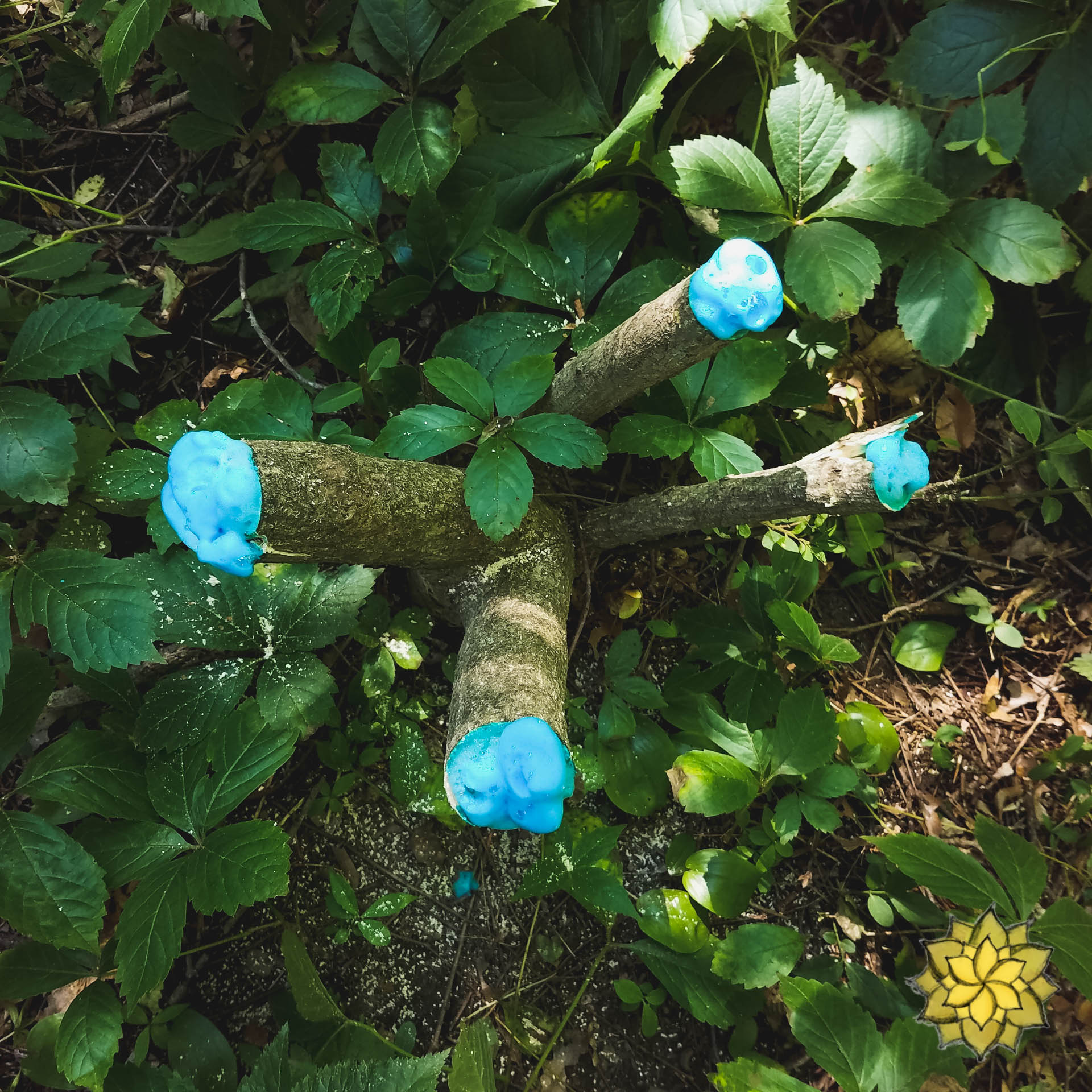
The Invasive Plant Problem
Invasive plants pose a great risk to the health and safety of our home landscapes and natural environment. Invasive plants, when left unchecked, can quickly colonize an area and displace the native flora that would normally fill the same niche. The problem with this succession is that invasive plants reduce the biodiversity of plant life and as a result reduce the biodiversity of wildlife that our environment can support. They also present safety issues with causing premature death in trees which leads to safety concerns especially in denser human development.
BEFORE & AFTER

Methods of Control
With invasive plants, traditional methods of mechanical cut backs, hand pulling/weeding alone are not enough to help control their growth. While hand pulling can help set back growth of plants like Asiatic bittersweet and glossy buckthorn in their immature states, any root material that breaks off in the soil can come back as a new plant. Cutting woody invasive plants alone does little to hinder growth. Cutting woody stems generates multiple new shoots of growth at the cut point and only temporarily interrupts its growth cycle.
Precision Painting
Green Abundance does not enjoy the use of synthetic herbicides in our landscape. We clearly see their widespread misuse in the residential and commercial landscape setting. With that said, we understand systemic (root killing) herbicides are often the most effective approach in controlling invasive plant growth. To this end, Green Abundance invests in equipment that allows us to judiciously and precisely paint very small, but focused amounts of systemic herbicide, typically Glyphosate (Round-Up) and Triclopyr.
The majority of our invasive control methods employ topical foam applications. The foam carrier dramatically reduces run off from the plant site when applied to cut stumps. This allows us to minimize our herbicide use while also protecting nearby native plants from harm.
For sites where foliar applications are necessary we use a combination of tools. For smaller infestations or where native vegetation is still a dominant component of the site, we employ hand held foaming applicators. These create the largest droplet size and significantly reduce drift (indicated in picture gallery). The foam consistency is closer to a Jackson Pollack painting than an aerosolized spray. For larger contiguous stands of invasive plants (often Japanese knotweed stands or bittersweet thickets) we use low volume electronic pressure regulated back pack systems to maintain consistent applications with largest droplet size possible.
To be clear this is NOT an organic approach and is not appropriate in garden beds used for food production.
Management Timing
To maximize the use of our systemic herbicides, it is crucial to properly time their application. As a general rule of thumb, most woody plants are best treated outside of the spring growth cycle. For eastern Massachusetts this roughly works out to be a June-February management time frame.
The reason we do not perform our herbicide applications in the spring is the herbicide needs to translocate to the plant’s root system. During spring, sap flows are sending energy up from the plant’s roots out to their branches to grow new leaves. This upward flow of energy works against a systemic herbicide making its way to a plant’s roots.
There are some plants like Garlic Mustard Weed whose life cycle is over by the summer. In cases like these spring management is necessary for their effective control.
Maintenance
Our methods of controlling invasive plants average 90-95% efficacy rates for plant control. With this in mind we always recommend at least one follow up visit during the next season.
This allows us to:
1. Retreat any plants that may have survived from a first pass.
2. Treat invasive seedlings that have newly germinated in the space. For areas with a lot of invasive pressure, there is likely a high volume of invasive plant seeds in the site’s soil seed bank. Treating invasive plants at this immature stage of growth is much easier and is an efficient way to prevent a larger problem from developing again.
For some landscapes, annual or biannual visits are recommended to keep invasive plants in check.
Follow up visits are usually handled by a single technician at a much lower cost than initial cleanings.
PAINTING GALLERY
FILM GALLERY

INVASIVE PLANTS OF MASSACHUSETTS
More common invasive and problematic plants that we manage:
Black Locust
Climbing nightshade
English Ivy


































































